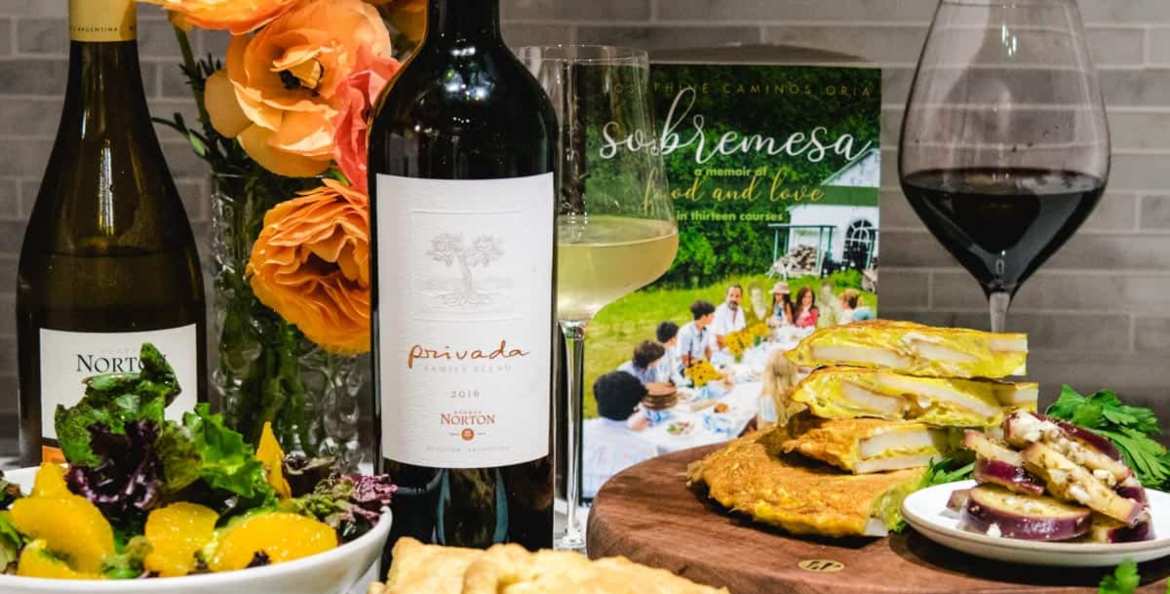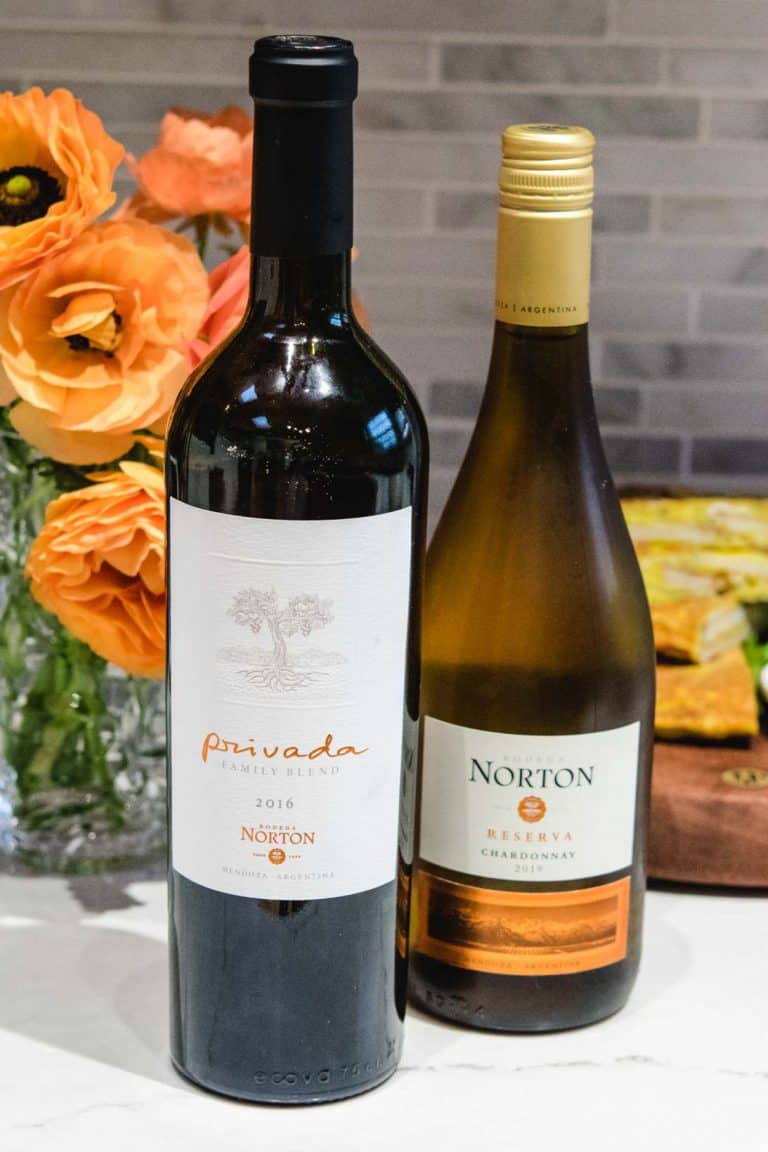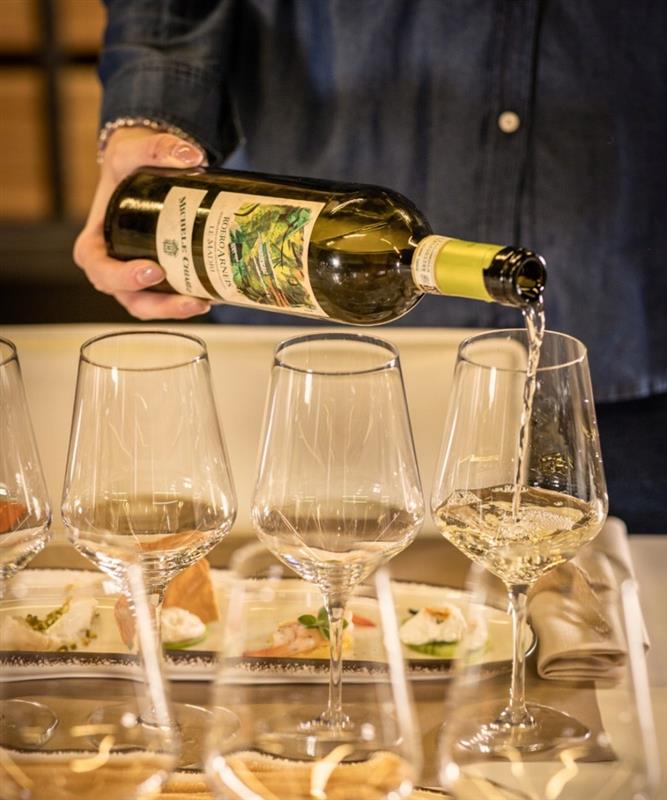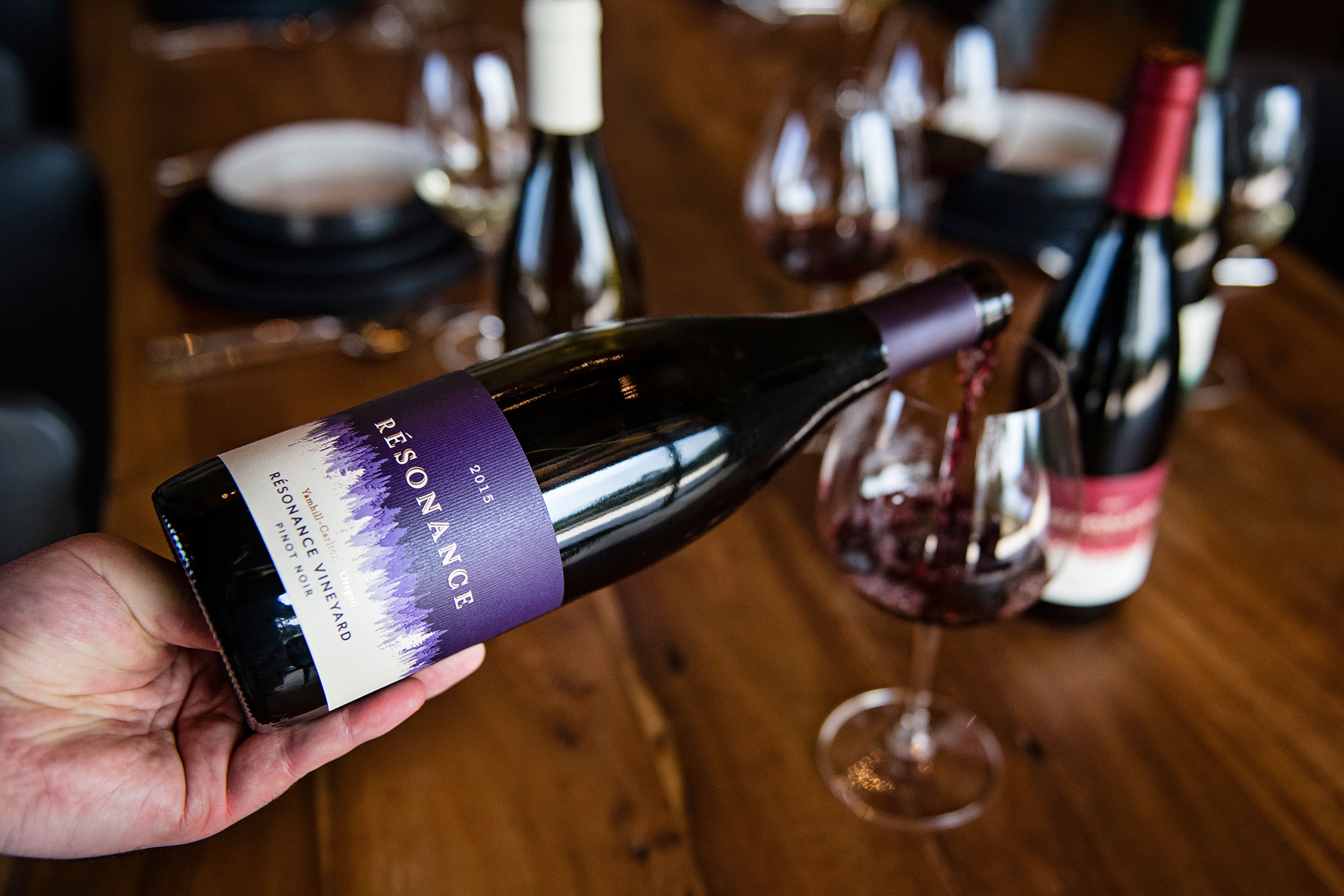Linger at the table a little longer with this vegetarian menu inspired by a food memoir with indispensable tips on Argentinian cuisine.
When you decide to dish out your entire family for public consumption, there are only two things that could make it better: 1) Oprah 2) Recipes. Sobramesa succeeds by delivering an Argentinian memoir of food and love in 13 courses with heirloom family recipes.
Linger At The Table A Little Longer
Sobramesa is the Spanish noun for “time spent being present at the table, lingering over a meal in conversation well after the food is gone.”
There is no English language equivalent for this shared time. But you are probably familiar with waiting for a check at a restaurant long after the dishes have been cleared and continuing the dinner conversation.
The author, Josephine Caminos Oria, immigrated to the US as a child and settled in Pittsburgh, PA. Despite the long distance from their homeland, their family maintained their Argentinian culture through food and strong family bonds.
Top 5 Argentinian Food Tips
While the focus of the memoir is on familial and romantic love, the tidbits I found most tantalizing were the indispensable tips on making authentic Argentinian food, which deepened my understanding of the cuisine.
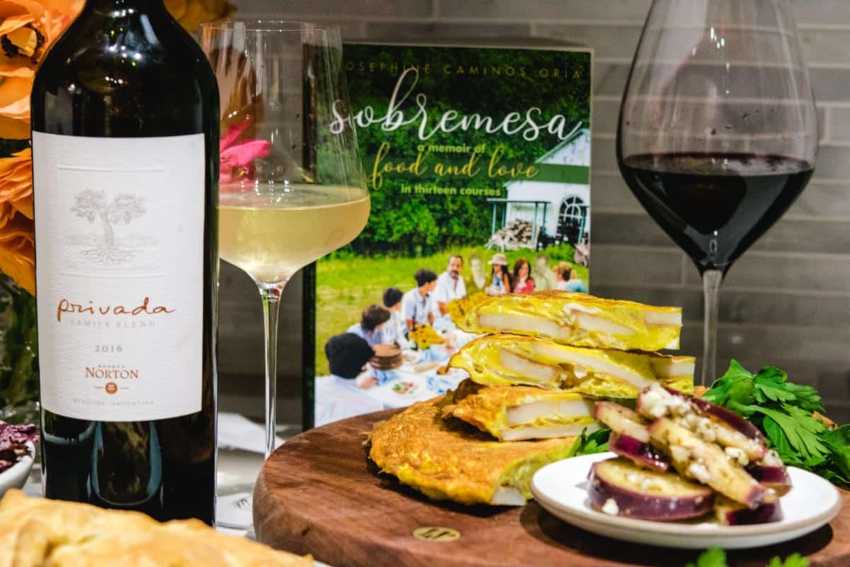
#1 Eggs Are Not For Breakfast
Her: “Eggs for breakfast is utterly American. Most Argentines would be appalled.”
Her Hubby: “You know, when an Argentine makes you eggs before noon, it means they really love you.”
#2 Chimichurri Do’s And Don’ts
- An authentic Argentinian chimichurri sauce must have: 1) water boiled with salt, 2) red wine vinegar, 3) extra virgin olive oil, 4) garlic cloves, 5) crushed red pepper flakes, and 6) loads of oregano and parsley
- DO NOT serve the chimichurri directly on the grilled meat.
- DO serve chimichurri on the side in a bowl.
Gaton always said you could judge someone’s character by the chimichurri they served at an asado. In Argentina, each family had their own tried and true recipe, usually passed down from previous generations. To be considered authentic, chimichurri had to include the basics—salmuera (a fancy word for water boiled with salt), red wine vinegar, extra-virgin olive oil, garlic cloves, crushed red pepper flakes and loads of oregano and parsley. The rest was up to the asador’s preferences and closely guarded family traditions. God forbid you bought it in the supermarket, or even worse-served chimichurri smeared over the just-grilled meat! That was sacrilegious. Each person, by the grace of God, had a right to dress his steak any way he wanted. Chimichurri belonged in a bowl with a spoon, and should be passed around for each person to do as they pleased.”
Sobramesa by Josephina Caminos Ora
#3 Milanesas Are An Argentinian Food Staple
Growing up, milanesas – breaded, thin slices of prim beef from the colita de cuadril sirloin roast – were always served at our family table when there was no one around to impress. If red meat wasn’t your thing, chicken, soy or sliced eggplant milanesas took its place. This was the default dinner when mom and Dorita were too tired for ideas, but that didn’t mean they worked any less. It took love, time and bloody knuckles to make one really good milanesa, nonetheless three dozen at a time – especially when your husband and sons could each down five in one sitting. Mom likened them to culinary food soldiers.”
Sobramesa by Josephina Caminos Ora
They also pair with Malbec wine as her romance with her future husband was “forged over milanesas, Malbec, and under the table rompings at sobramesa.”
#4 The Secret To Spanish Tortillas (Egg Frittatas)
Per abuela Dorita, the secret to tortilla “is in the flip. If you time it correctly you’ll get that soft, custardy center that keeps you coming back for more.”
Second to mom’s mushroom sandwiches, tortilla was comfort food par excellence. As a child, I’d often find myself watching Dorita as she prepared it, first frying the potatoes and then the onions. I was always amazed how a couple of humble ingredients could transform into a nuanced and soul satisfying dish fit for a queen.”
Sobramesa by Josephina Caminos Ora
#5 Do’s And Dont’s For Empanadas
- “Start the filling at least a day head of time, so the mixture can fully cool and congeal. This mixture is refrigerated at least 3 hours or overnight before adding the hard-boiled eggs.”
- “Store-bough tapas (pastry discs) makes equally just as good empanadas as those made with homemade dough.” Try the La Saltena brand of criollas or sequitas.
- “The empanada filling in itself is juicy, and the dried dough consistency soaks up the juices, creating a crisper finish.”
- Adding raisins is as debatable as adding them to the carrot cake.
- “A leak-proof seal is essential to mastering the empanada. Dorita always said a perfect repulgue should have 16 to 19 crimps to make the perfect crescent shape.”
- You MUST eat them with your hands. No knives and forks allowed!
A Vegetarian Argentinian Inspired Menu
The book is divided into 13 chapters (courses) with 13 recipes from which I drew inspiration for a vegetarian menu:
- Sopa pastina (Chicken soup with Pastina pasta noodles)
- Mom’s Thanksgiving Stuffing
- Ensalada de palmitos con salsa golf (Hearts of Palm Salad)
- Mom’s Mushroom Sandwich
- Tortilla Espagnola (Potato and Egg Frittata)
- Milanesas (Beef Milanese)
- Berenjenas al escabeche (Pickled Eggplant)
- Empanadas al cuchillo (Knife-Cut Beef Handheld Turnovers)
- Tarta pascualina (Spinach and Egg Easter Pie)
- Lentejas (Lentils)
- Ham and Cheese Sorrentinos (Bowler Hat Ravioli)
- Vitel tone (Sliced Eye of Round in Tuna Sauce)
- Noqui de ricota (Ricotta Gnocchi)
An Organic Vegetarian Inspired Menu
Since there is no way I’m making 13 courses, I settled for these 5 vegetarian dishes inspired by the book:
- Pickled Eggplant – apple cider vinegar, fresh garlic, dried oregano, avocado oil. The original recipe uses fresh parsley, but I still loved this dish and will be making it again. I have never had pickled eggplant, but the eggplant delivered a lovely crunch akin to a cucumber pickle and a great alternative way to serve this vegetable.
- Mom’s Mushrooms – on sweet potato “toast” with thyme and olive oil. Yum! The baby portabellas I used had so much flavor, and the sweet potatoes too were out of this world.
- Vegan Empanadas – vegan puff pastry, rainbow swiss chard, green olives, onion, golden raisins, cumin, paprika, red chili flakes. I’m patting myself on the back for this for not using beef because puff pastry can seriously make anything taste good.
- Potato Tortilla – eggs, russet potato, onion, black pepper. Hooray as I did get my tortilla to flip properly but my center could have been more custardy.
- Ensalada Mixta – spring mix, navel oranges, avocado, lime juice, orange juice, avocado oil. I loved the the fresh citrus dressing instead of using a sharper vinegar.
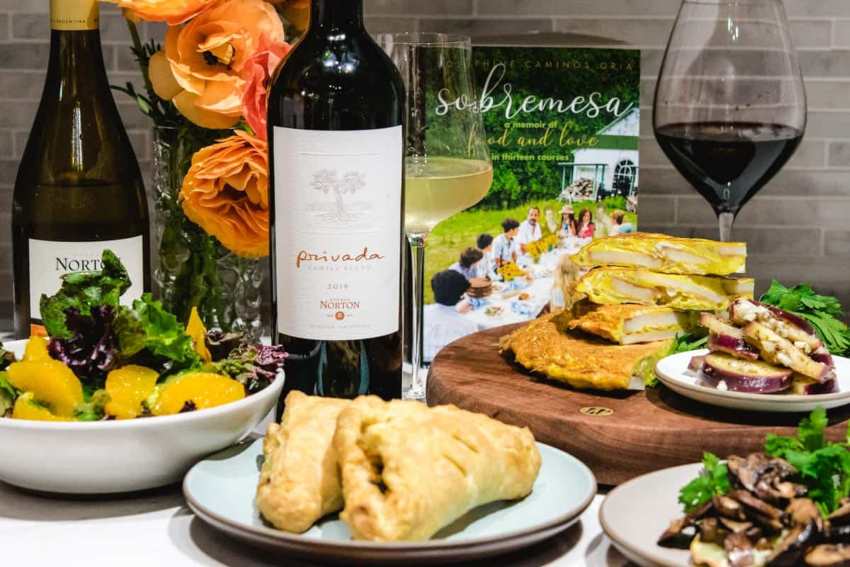
I sourced organic ingredients for most of the items, and it made the whole meal just feel extra nourishing.
Now, how did this all taste with the Argentinian wines?
Wine Pairing With Bodega Norton Wines
2019 Bodega Norton Chardonnay Reserve
13.5% alcohol; $15
Sourced from vines that are 30-50 years old. Aged in French Oak followed by 3 months of bottle ageing.
Visual: Pale yellow, subtle green hue, slightly hazy
Aroma: Honeysuckle, apricot, talcum, baby powder, Sprite
Taste: Kiwi, bee pollen bite, lemon peel. Would not have guessed it has 13.5% alcohol.
Pairing: Particularly nice with the avocado/citrus salad and sharpened the acid notes in the wine. Lovely with the egg tortilla for more lemon brightness. Handled the spice in the empanada and tempered the vinegar in the pickled eggplant.
2016 Bodega Norton Privada Family Blend
40% Malbec, 30% Cabernet Sauvignon, 30% Merlot; 14.5% alcohol, $25
Sourced from 50-90 year old vineyards located in Lujun de Cayo.
Visual: deep garnet red, pink rim, non-distinctive legs
Aroma: leather, must, blackberry
Taste: Cherry juice, concentrated, tastes much lighter and brighter than it looks
Pairing: With the mushroom toasts, it made the wine more perfumed and tart. Did not do so well with the sweetness of the sweet potato. Really nice with the Swiss chard empanadas; the little bit of spice tempered nicely with the wine.
Now Go Make Love
As the book emphasizes, food is a shared experience where relationships with family and lovers are forged. In the author’s words:
Food, after all, has been the language of lovers since Eve offered Adam her forbidden fruit.
So grab some vegetables from the Garden of Eden, and go love on your Adam or Eve over a home cooked meal.
